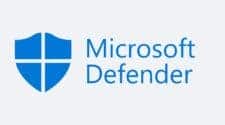Custom Windows ISOs have recently gained a lot of attention online. Many users praise these customized distributions for improving privacy, reducing telemetry, and boosting performance, especially in gaming. However, be cautious: unlike Linux distributions, custom Windows ISOs can pose serious security risks.
Fortunately, there are great alternative tools that can help you achieve a bloat-free, speedy OS without the risks.
Windows Custom ISOs: What does it Really Mean?
Custom images for Windows have existed for as long as Windows itself. There are many tools available that let you download official Microsoft .iso files, which you can then burn onto a USB stick or CD. Before installing these images, you can open and modify them, adding features, installing software, or making tweaks to Windows for various reasons.
Many users online modify and create custom Windows images for various purposes and provide them for download. These modifications can include removing bloatware, improving gaming performance, or disabling tracking cookies. However, some modifications may be for malicious purposes.
What Could be the Dangers in Using Custom Windows ISO?
Custom Windows ISOs are fundamentally very dangerous, and you shouldn’t use them. It’s hard to tell what has been modified in an ISO without comparing it to a valid ISO, which is a difficult process. Once installed, your PC could immediately become part of a botnet, have a malicious rootkit installed, or face other severe threats.
By using a custom Windows ISO, you also sacrifice your existing protections by potentially giving a malicious attacker root access to your filesystem before installation. This can lead to various threats, such as adding malicious certificates, performing man-in-the-middle traffic sniffing attacks, and disabling protections like antivirus or firewall.
Using a Signed ISO is much Safer
You might wonder how Linux ISOs are safe. The key element is the checksum that accompanies them. This checksum is generated along with a PGP keypair, which allows the developers of a distro to publicly verify their identity. This process, known as software signing, ensures that the software is authentic. Installing unsigned software usually triggers warnings in your OS, such as “We can’t verify the developer of this software.”
These distros are also open-source, allowing the public to verify that the contents of an ISO are as expected. This transparency helps ensure the integrity and security of the software.
Indeed, trusting the original developers of the Linux distro is crucial. While this has been a concern in the past, the use of checksums, PGP keys, and open-source transparency helps mitigate risks and encourages community verification, enhancing overall safety.
Which ISO Should you Use?
There are several excellent alternatives to downloading a custom Windows ISO. One of the best options is to use a post-install script that runs locally on your PC. These scripts are open-source, allowing the community to verify their contents, and they typically do not download binaries directly, which reduces the risk of potential compromise.
There are indeed excellent examples of scripts that can enhance your Windows experience similarly to custom ISOs, but with much lower risk. However, it’s crucial to exercise caution with any modifications to your operating system. Always validate scripts yourself and only use scripts from reputable sources to ensure safety and security. Below, we will discuss a few Windows Custom ISOs that are safer for you to use.
Win11Debloat
Win11Debloat is a straightforward PowerShell script designed to remove bloatware from your Windows OS. It disables telemetry, removes default apps, and eliminates Bing and Copilot, among other features. For those interested, the script is available on GitHub for review and use. However, always exercise caution and verify scripts from trusted sources before running them on your system.
ChrisTitusTech’s WinUtil
While this is technically a script, it pushes the boundaries by offering a fully functional GUI and a wide range of tweaks, tools, updates, and configuration options. It serves as a comprehensive one-stop-shop for optimizing your Windows installation for debloating and speed. While it doesn’t focus heavily on gaming tweaks, it does provide pre-configured options for security and updates, making it a versatile tool for Windows optimization.
Another advantage of tools like WinUtil is their ease of use and approachability, thanks to their graphical user interface (GUI). You can get started quickly without needing to download the script separately. It can be executed with a simple one-liner in your PowerShell terminal, which makes it convenient but may not be the safest approach for cautious users concerned about security. It’s always recommended to review scripts and their source thoroughly before running them on your system.
Building your Own Windows Custom ISO is also an Option
It’s crucial to differentiate between custom Windows images created by untrusted sources and those built personally. Custom Windows images are risky primarily because of potential malicious alterations by their creators. Building your own custom image, however, as previously covered on XDA, is a different scenario. You can safely use tools mentioned earlier to customize and package the image yourself, then burn it onto a USB for convenient, repeat installations across all your PCs. This approach ensures control over what’s included in your Windows setup, mitigating security concerns associated with unknown sources.
Conclusion
Fundamentally, closed-source Windows distributions are risky, and it’s best to avoid them. There are numerous examples available, although specifics are not linked for safety reasons. Regardless of how reputable the developer appears, the inability to easily verify the contents of these distributions makes them inherently unsafe. When downloading Windows or any other operating system, it’s safest to use the official first-party website provided by the developer. This ensures the authenticity and security of the software you’re installing.
The exploits that can exist in these closed-source Windows distributions can remain undetected for extended periods, posing significant risks. Protecting your home cybersecurity is crucial because the consequences of compromise can be disastrous and potentially life-changing. It’s essential to prioritize security and rely on trusted sources for software installations to mitigate these risks effectively.
Source / Via: XDA Developers





